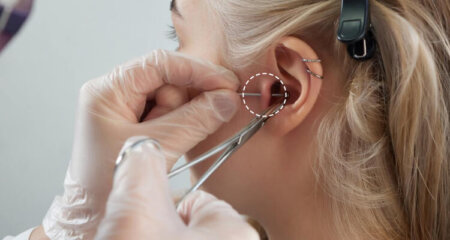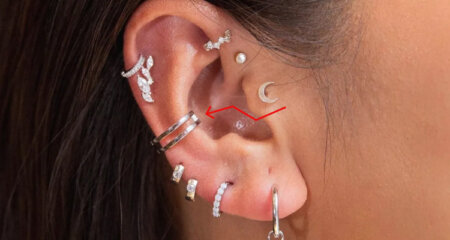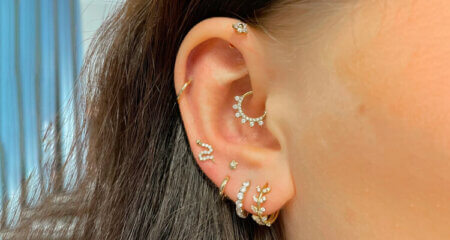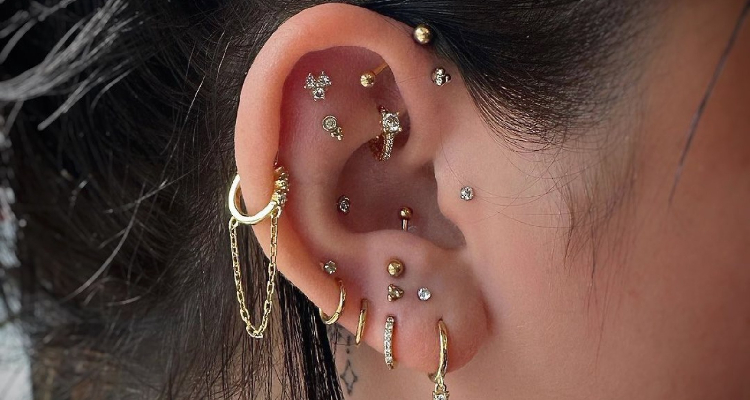
Ear Piercing Aftercare: A Step-by-Step Guide
Posted on
Ear piercing is one of the most common types of piercings. In most religions, such as Hinduism, ear piercing is a MUST for girls. They get their girls’ ears pierced at a very young age.
Now things have changed tremendously. These days both males and females get their ears pierced. The best thing about ear piercing is that it offers a wide variety of different piercing possibilities. A lot of people these days are giving serious consideration to ear piercing by having different parts of their ears pierced, from their cartilage to earlobes, tragus to the helix.
However, despite their widespread use, the majority of piercings in the ear can be rather challenging to heal.
In this post, we shall discuss everything that you need to know about ear piercing aftercare.
Let’s get started…
What Is Ear Piercing?
Ear piercing is the procedure of creating a tiny hole in the earlobe or cartilage of the ear to wear earrings. The term “ear piercing” typically refers to an earlobe piercing, whereas “cartilage piercings” refers to the piercings in the upper portion of the external ear. Cartilage piercings are more difficult to perform and require longer to heal than earlobe piercings.
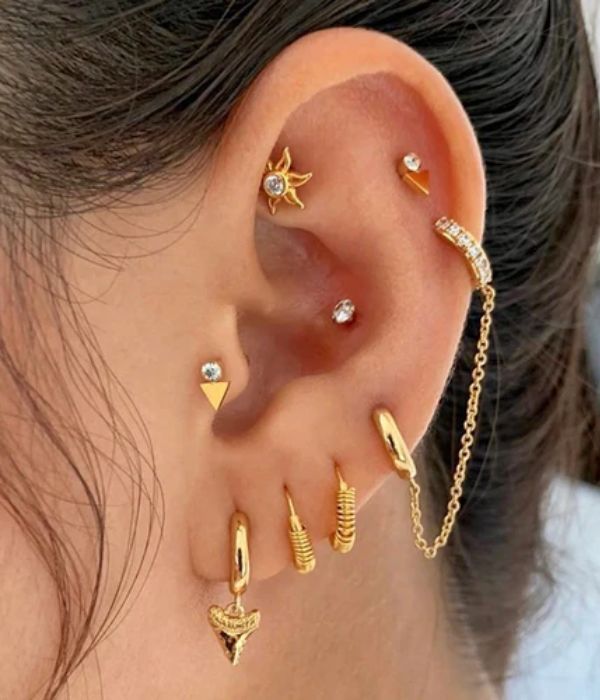
Earlobe piercing is less painful compared to cartilage piercing. Piercing your lobe will feel like a little pinching sensation. Whereas cartilage piercings are among the most excruciatingly painful types of piercings you can have. You might feel a significant amount of discomfort, although the degree of it will change slightly depending on the type of cartilage piercing you get.
However, it is advised to opt for a professional piercer who possesses immense knowledge. The level of your piercer’s experience and expertise will have a significant impact on how comfortable you are during the process. A skilled piercer will be able to finish the piercing in a single rapid movement, which is not the case with unskilled piercers.
Both the intensity of pain and the amount of time it takes to heal are heavily influenced by the placement of the piercing.
How Long Does It Take for Ear Piercings to Heal?
The length of time required to heal after a piercing is proportional to its location. Healing time for cartilage piercings takes anywhere from three months to nine months, whereas lobe piercings heal in the range of four to eight weeks. The difference in the amount of blood that flows through each region is the primary cause of this significant gap in recovery timeframes.
Cartilage lacks blood vessels, because of which it receives very little circulation from the surrounding tissues. Since blood is necessary for the healing process, it takes significantly more time for cartilage to repair. Also, cartilage is more prone to infection, which could lengthen the amount of time it takes for the wound to heal. Since the lobe has a greater volume of blood flowing through it, it does not have the same problems.
In the case of a cartilage piercing, most of the surface healing happens in the first 12 weeks or so; however, the deeper part of the piercing still needs a full year to heal. Usually, professionals advise waiting at least a year after getting a cartilage piercing to change out the earring. If you try to remove the starting jewelry before that time, you may hamper the healing process or may run the danger of the piercing starting to close. If you have recently undergone lobe or cartilage piercings, avoid changing your starting earrings for at least the first year. Doing so will prevent the hole from sealing up.
Make sure your piercer uses starting earrings that do not contain nickel. Nickel-free earrings prevent any kind of infection.
Ear Piercing Aftercare
The aftercare procedure for both earlobe piercing and cartilage piercing is going to be the same. However, the cartilage is more prone to issues such as scarring, piercing bumps, and infection. Also, it takes more time to heal.
Here are some of the ways you can take care of your ear piercing and prevent any kind of infection:
1. Keep the area clean
Maintaining cleanliness is a MUST when you get your ears pierced. It is recommended that you clean your ear piercing with a piercing aftercare saline solution at least twice a day.
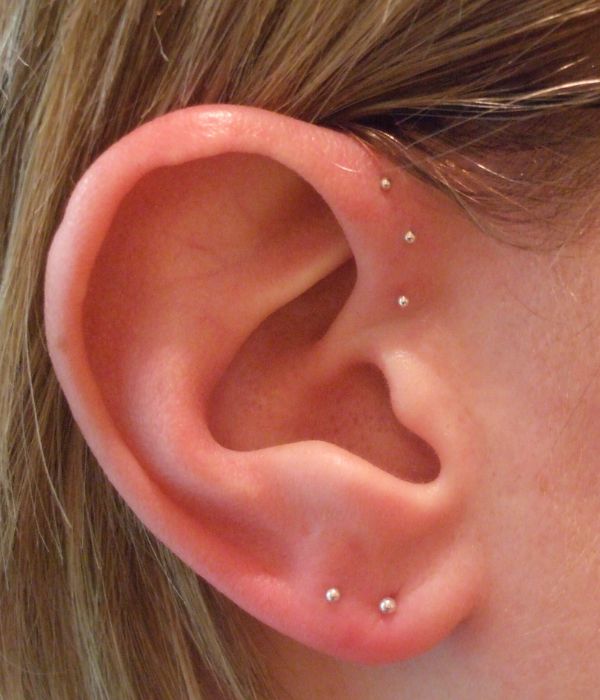
2. Invest in the right kind of piercing aftercare solution
Invest in a piercing-specific saline solution so that you can clean your new piercing properly. Some piercing solutions may contain additives. Using them may be harmful. Hence, pick a solution that consists of only salt and water.
3. Avoid buying chemical-based aftercare solutions
Some piercing aftercare products, including tea tree oil, include chemicals. Using a chemical-based aftercare solution can hinder the healing process or lead to some kind of infection. These compounds are harsh and have the potential to create inflammation, which can slow down the healing process. Hence, it is crucial that you avoid using chemical-based aftercare solutions.
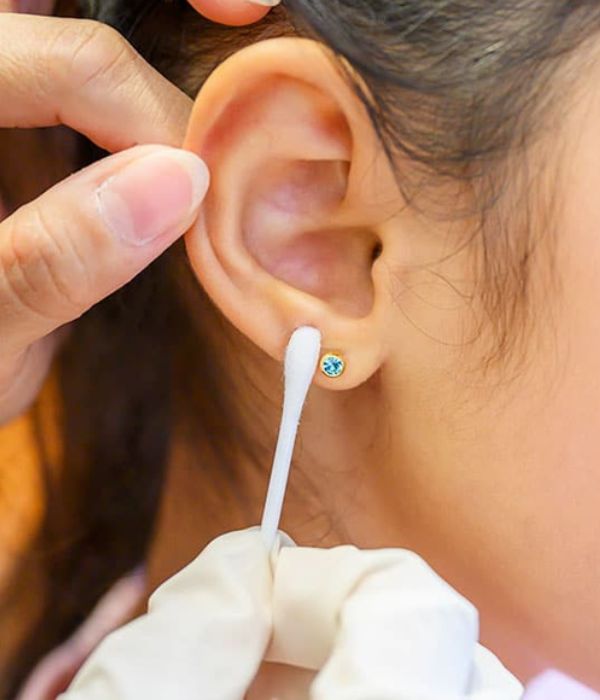
4. Avoid lying on your newly pierced ear.
When we sleep, we hardly care about anything. However, if you have newly pierced ears, it is crucial that you avoid sleeping on your new piercing. Make it a priority to avoid rolling over onto your side as you sleep. If you really must, then you should make sure to switch sides at regular intervals.
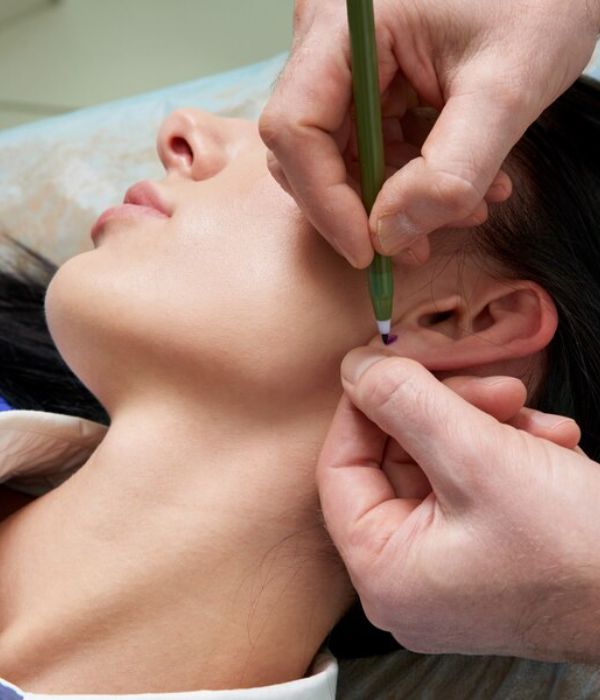
You can even use a travel pillow to avoid putting pressure on your healing piercing. You can insert your ear into the hole designed for the neck. This will allow you to lay on your side without straining your neck.
5. Use clean sheets and pillows.
Aside from how you sleep, where you sleep also matters! Yes, you should sleep only on clean sheets and pillows each night. Using clean pillowcases is essential in order to keep any kind of infection at bay.
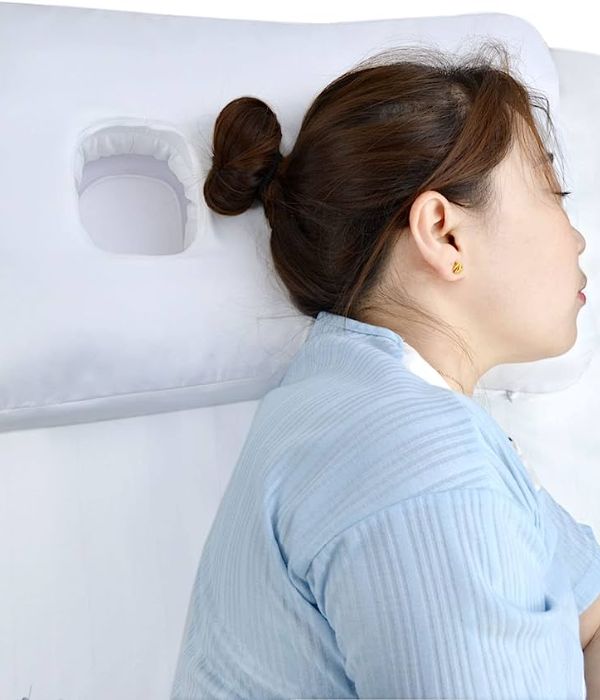
6. Avoid touching your piercing and earrings.
You may want to touch your ear piercing every now and then to check its condition. But it is not a great practice at all. Or you may want to touch your starting earrings to see how they look; you should avoid doing it.
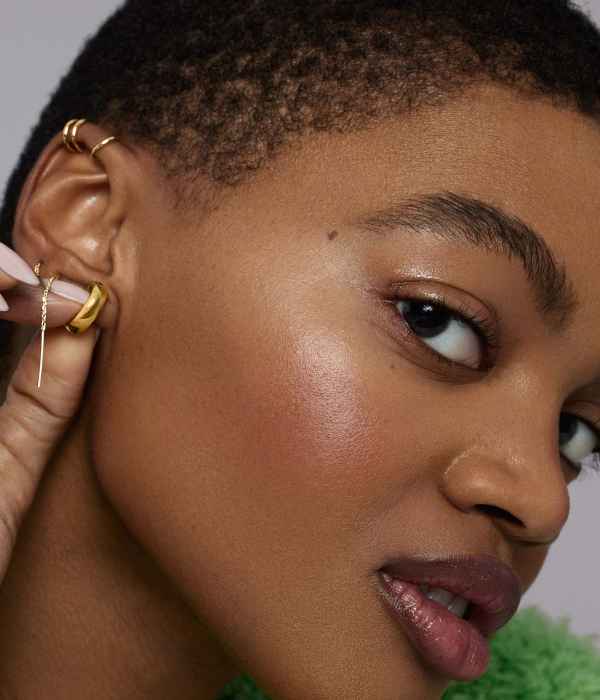
You should avoid touching your ear piercing at all costs. Touching it, again and again can lead to infection, which will just extend the healing time.
Touching your earrings can cause the skin to tear, which can lead to skin irritation and make the healing process take longer. Try not to fiddle with the jewellery even if it happens to cross your mind. This may contaminate the area with bacteria and cause harm to the healing skin.
7. Avoid snagging or ripping.
Ripping is yet another issue. It usually happens due to your hair, hands, and clothing. Usually, your hair, hands, and clothes are all susceptible to becoming entangled in the jewellery. This is not only painful, but it also carries the risk of the formation of scar tissue. If you have long hair, it’s probably a good idea to pull it back during the first few weeks while you’re recovering so that it doesn’t get in the way. When you first start wearing jewellery, while you’re still getting used to it, you should make sure to wear garments that won’t easily snag, especially in the beginning.
8. Remove crusties using an aftercare solution
New piercings tend to cause crusties with time. Some people tend to pull them out, which is a very bad habit. You must not pull them; doing so can lead to infection or extent the healing time. If you really want to dab away the crusties, do it with an aftercare solution. All you have to do is to soak a clean paper towel in saline solution and use it to gently dab away the crusties.
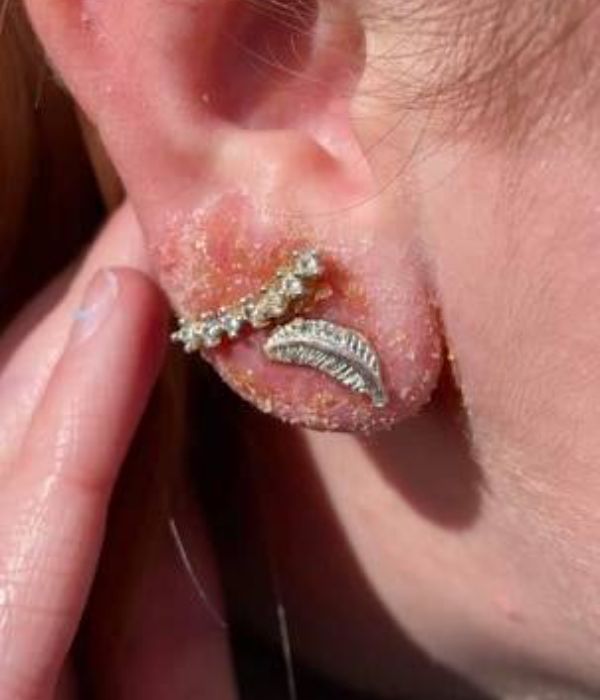
9. Keep the area around your piercing dry.
It is essential to keep your newly pierced ear dry. Dampness might be the source of certain protruding lumps. Keep your piercing away from any still water, such as that which may be found in swimming pools, lakes, and hot tubs. Also, make sure you completely dry your piercing once you get out of the shower.
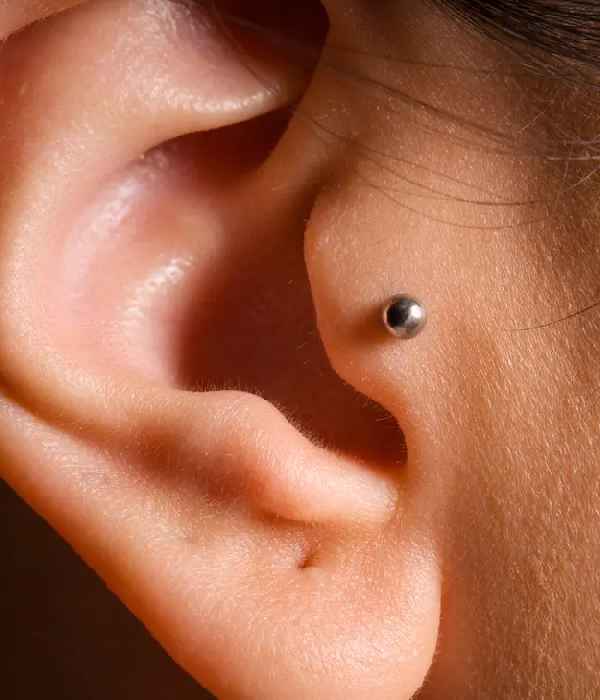
10. Visit your piercer in case of any infection or piercing rejection
Piercing infection and piercing rejection is pretty common when people don’t take good care of their piercing. The rejection of a piercing might happen after an unpleasant snag or if the piercing was not done correctly.
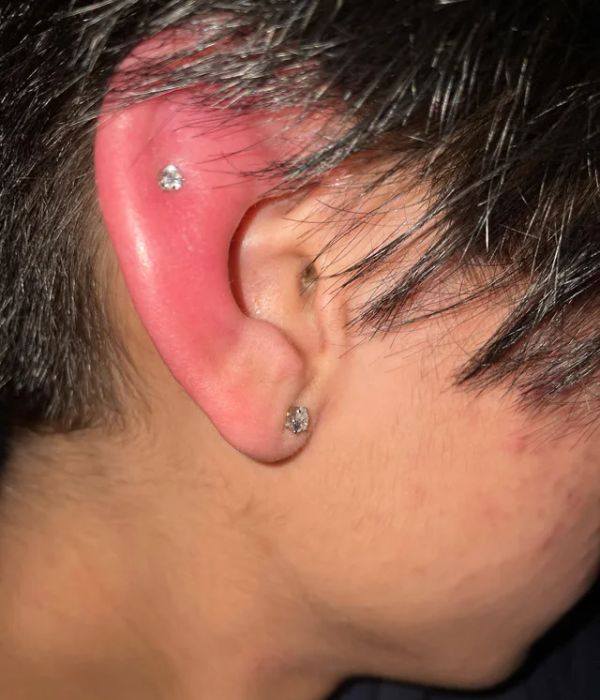
Skin that is red and flaky around the piercing site, jewellery that has migrated substantially, or bigger piercing holes are all indications that the piercing has been rejected. Visit your piercer if you are experiencing piercing rejection or any kind of infection. They will help you with the right solution. Hence, it is critical that you don’t delay visiting your piercer if you experience any problem with your piercing.
Possible Side Effects of Ear Piercing
When you get your ears pierced, just like with any other kind of piercing, you run the risk of experiencing some negative effects. The good news is that there are ways you can keep all the side effects at bay.
Some people may experience side effects of ear piercing even after taking good aftercare. Hence, it is crucial that you are aware of all the possible side effects of ear piercing so that you can prevent them. Here are some of the most common side effects of ear piercing:
1. Piercing Bumps: Due to the lengthy healing time, your cartilage is more prone to issues associated with piercings, particularly piercing bumps. However, if you take the necessary precautions and steer clear of any snags or tears, you may avoid piercing bumps.
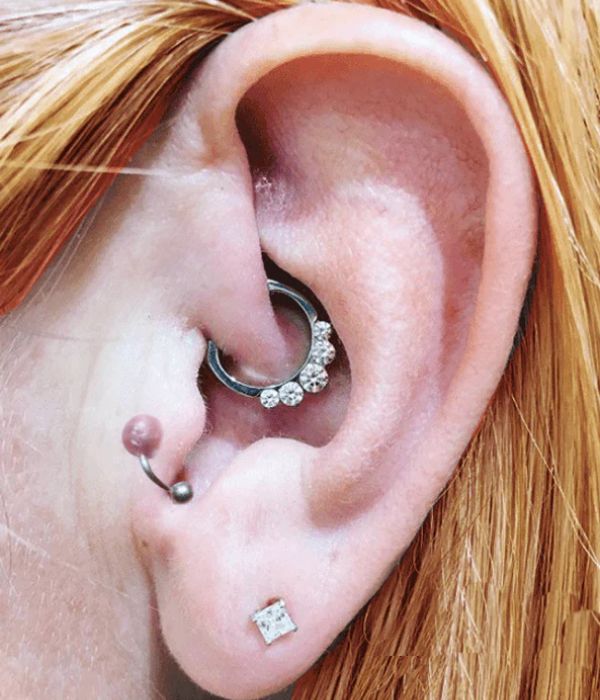
2. Piercing Infection: Infections following a piercing are actually quite common if you don’t take good care of your new piercing. A piercing infection can be identified by the presence of a green or yellow discharge, a sense of feverishness around the piercing site, and significant swelling or bleeding at the piercing site. You can avoid piercing infection by keeping the area clean and dry at all times. It is crucial to use high-quality saline solution to clean your piercing. If you start to experience all the symptoms of piercing infection, visit a doctor immediately. They can help you with the right medication immediately.
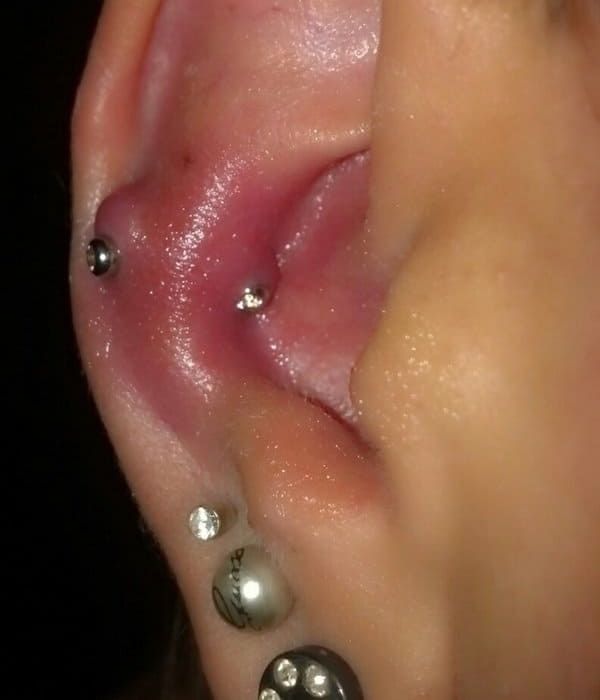
3. Pustules and Hypertrophic Scarring: Snags, improper cleaning procedures, and irritation are the three main causes of pustules, and hypertrophic scarring, otherwise known as irritation bumps. If you notice any pustules and hypertrophic scarring on your piercing, immediately visit your piercer. Your piercer will identify the sort of lump you have and recommend the appropriate therapy.
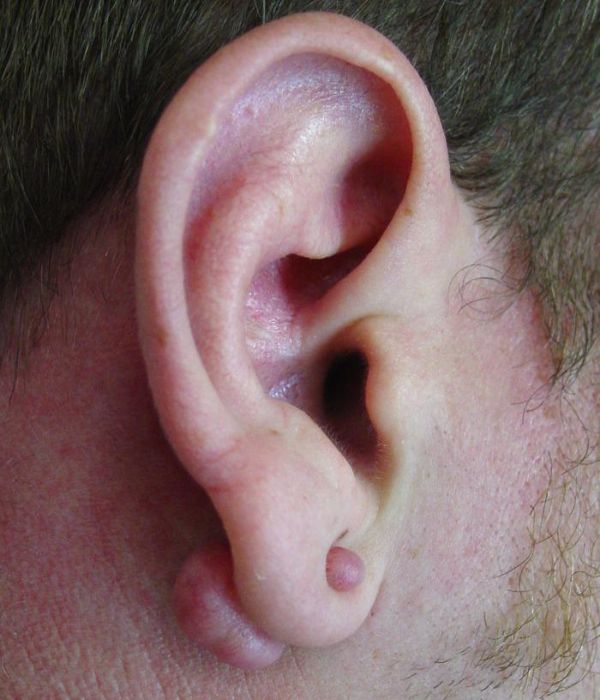
4. Piercing Rejection: Piercing rejection is a common problem that occurs after an unpleasant snag or if the piercing is not done correctly. Red and flaky skin around the piercing site, falling off jewellery, or bigger piercing holes are all signs of piercing rejection. If you experience any of these, then you must visit your piercer. They may help you with the right solution for piercing rejection. You may also remove the starting jewellery and give the piercing some time to heal before reinserting it.
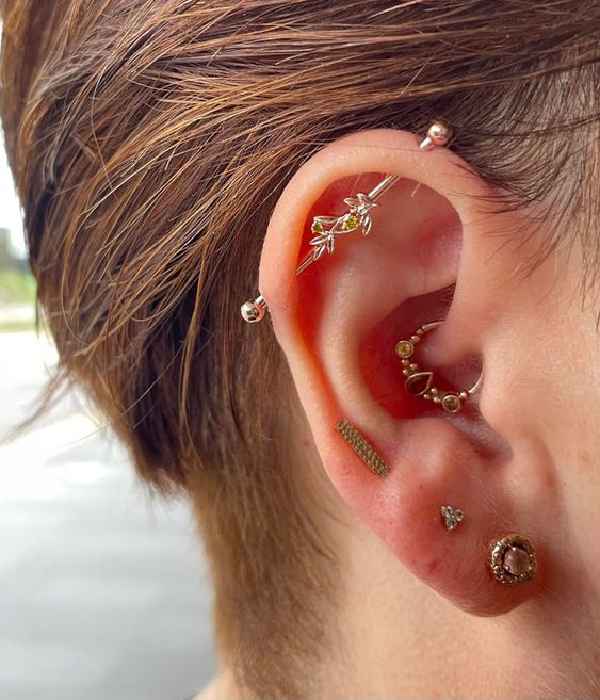
5. Keloids: Keloids on new piercing is one of the side effects that you may experience. Usually, they can appear anywhere on the body. Keloids are a kind of bulged skin. They may occur after any type of injury, including scrapes and bug bites. They have a discoloured appearance. If you or anybody in your family has never had a keloid before, and if no one else in your family has ever had a keloid before, then the bulge that is growing on your piercing is almost certainly not a keloid. Keloid scars are genetic and can run in families.
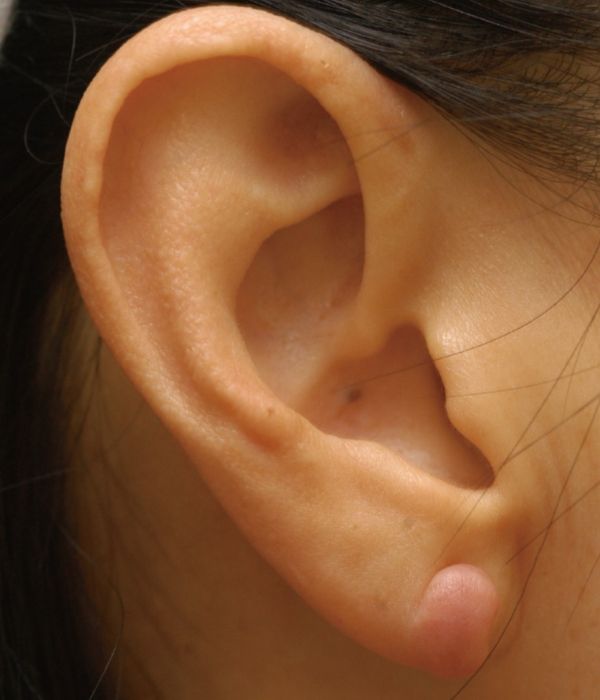
Wrapping it up…
So, these are the ways you can take very good care of your ear piercing just after the process. We hope that our ear-piercing aftercare tips will help you keep any kind of infection at bay. So, don’t hesitate to follow the tips and have an amazing piercing experience.
FAQs
1. How exactly does one get their ears pierced?
A professional piercer will first mark the place where you want to get your ear pierced. After that, he will use a needle or a piercing gun to create a hole in your ear. Once the hole is created, your piercer will then insert an earring through the newly created hole.
2. Which one is the safest option – a needle or a piercing gun?
Traditionally, piercers used needles to create holes in the ear. Needles enable piercers to acquire a more exact piercing angle, which is essential for performing the ideal piercing. When compared to needle piercing, a piercing gun causes less damage to the surrounding tissue, requires less time to recover, and is performed in an overall more hygienic manner.
Utilizing sterile tools, such as a piercing gun, can effectively remove any skin tissues on an even bigger scale than needles can. Guns are a considerably more effective method for piercing the ear than manually using a needle, and they often result in less stress to the ear. Guns can be used to pierce other areas of the body, including the nose, the naval, and the lip.
3. Does ear piercing cause pain? Does piercer use anaesthesia to numb the area?
Yes, depending on the location of ear piercing, you may experience little to excruciating pain. For instance, if you get your earlobe pierced, you may experience less pain. While in the case of cartilage piercing, you may expect to experience excruciating pain.
So far, anaesthesia is concerned; it is not required. No piercer ever uses anaesthesia to numb the area.
4. Is it safe to take an aspirin before ear piercing?
No. You shouldn’t take any aspirin or anything else before your ear piercing. Taking any medication, including aspirin, can lead to more bleeding than usual.
5. Is it necessary to get an ear piercing from a professional piercer?
Yes, it is crucial that you get your ear pierced by only a professional piercer. Some paediatricians are trained to perform piercings on very young kids. However, in the case of adults ear piercing, you must always get your ear pierced by experts.
Before getting your ears pierced, you should definitely search for the right person. You can find a piercer online or ask for references from people you know and trust. Also, it is crucial that you speak to your piercer before getting your ear pierced. It is always good to go to a few different piercers so you can get a sense of the place and the person. Check the following:
- The piercer has a valid licence.
- The piercer follows stringent standards of cleanliness, such as wearing gloves before piercing, disinfecting piercing tools after every use, and so on.
- The piercer uses the right tools or equipment.
- The piercer disinfects the tools before using them.
6. What are the different types of ear piercings?
There are several locations on your ear that you can get pierced, including
- Lobe piercing
- Snug piercing
- Helix piercing
- Cartilage piercing
- Rook piercing
- Tragus piercing
- Antitragus piercing
- Industrial piercing
- Antihelix piercing
- Conch piercing
- Auricle piercing
- Daith piercing
7. How long does the healing process take?
The time of healing varies based on the location you get pierced on your ear. It is because different areas of your ear contain different kinds of tissue. In most cases, it takes between six to twelve weeks. It might take anywhere from four months to a year for the cartilage on the side of your ear to heal after being pierced.
8. How much does an ear piercing cost?
The cost of piercing varies greatly based on the location you want to get pierced, the reputation and the experience of the piercer, the piercing’s complexity, and the piercing studio location. Usually, an earlobe piercing may cost you somewhere around $ 30 to $30. While for cartilage piercing, you may pay around $50 to $100. You may inquire with the piercing professional about the cost of the procedure.
It is imperative to opt for a piercer who is both qualified and skilled in order to minimise infections and difficulties. Also, make sure the piercer you choose adheres to strict standards of cleanliness. When deciding on a studio or piercer, you shouldn’t base your decision solely on the cost of the piercing. Make sure you prioritise your safety and cleanliness.
Happy Piercing… 😊 😊


